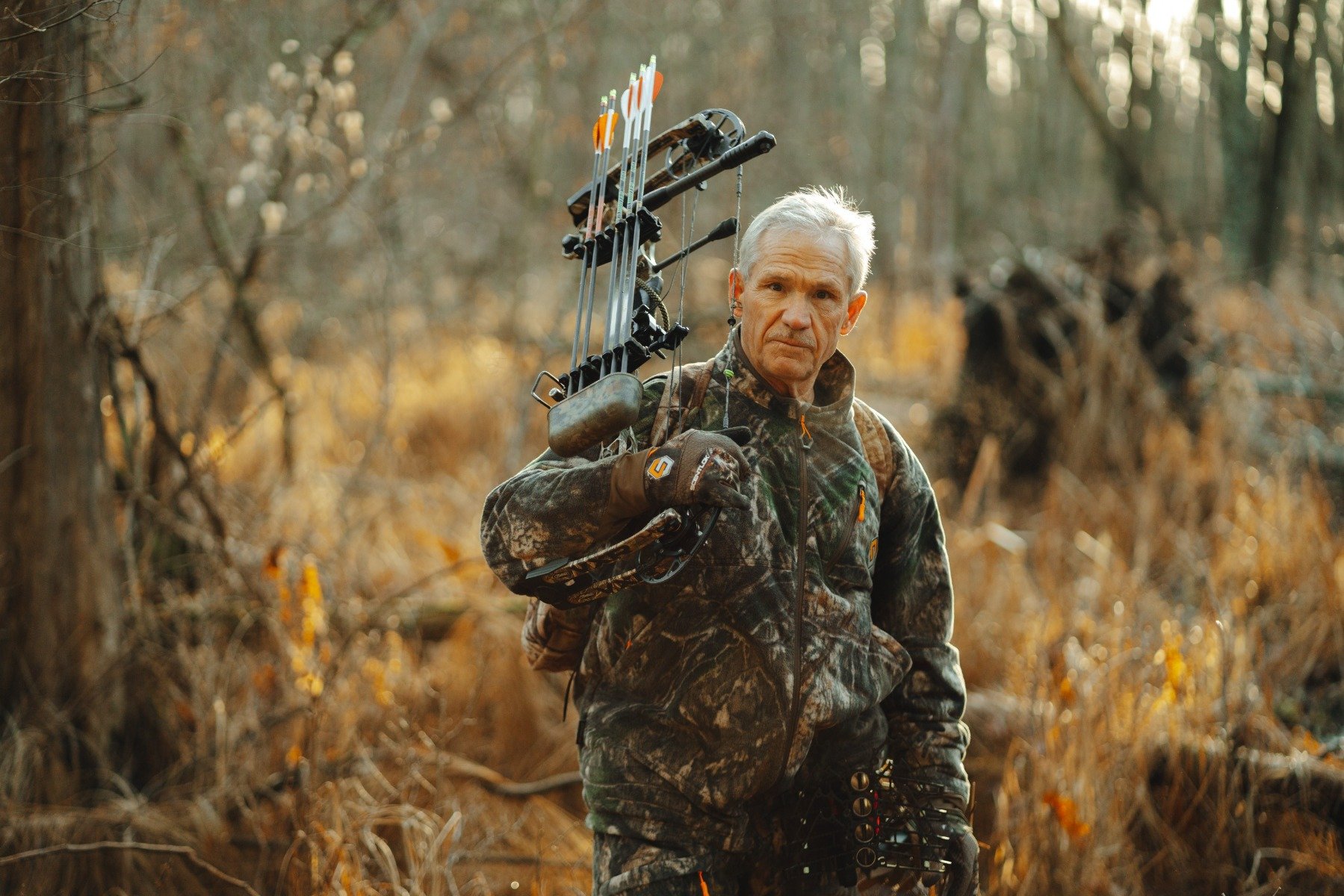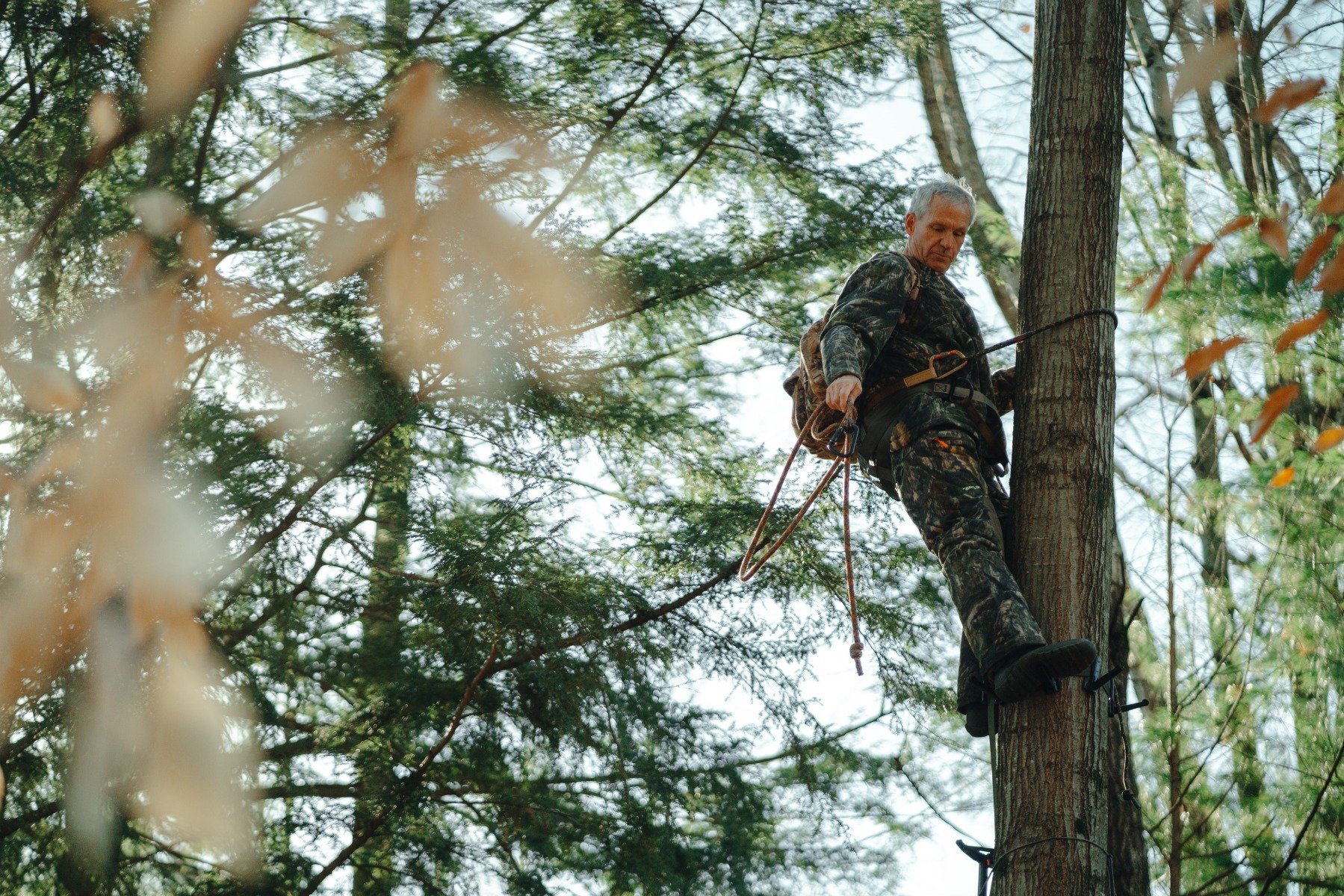For over five decades, seventy-two-year-old Michigan native John Eberhart has pursued whitetails with an unmatched passion. His journey as a bowhunter began in the late sixties, and since then, he has amassed a remarkable record of harvesting trophy bucks, particularly in Michigan’s heavily pressured public lands. He has taken thirty-four record book bucks. However, Eberhart’s success isn’t merely a result of his skill with a bow; it’s also deeply rooted in his understanding and mastery of scent control—a crucial aspect of hunting often overlooked by many. In a candid conversation, Eberhart shared his insights into scent control, highlighting its pivotal role in outsmarting whitetails’ keen senses. “A whitetail’s nose is the number one tool against avoiding danger,” he emphasized. That is why hunters must pay attention to detail. I have interviewed Eberhart in the past and am always intrigued by his opinions and, more importantly, his success with scent control. ‘

Over the past twenty years of being in the hunting industry, I have had the opportunity to be around several successful big-buck hunters. Many of those are due to being involved with companies that they represented and that I worked with myself. Most hunting manufacturers I have been affiliated with have something to do with scent control for whitetail deer hunting. Over the years, I have been around different technologies, techniques, and theories of how to fool a whitetail’s nose. I empathize with individuals’ viewpoints regarding whether these methods are effective or merely gimmicks. There are no gimmicks when speaking to Eberhart about his success using ScentLok and carbon clothing. If you do what Eberhart suggests, it is, without a doubt, the most successful way of fooling a whitetail’s nose every time you enter the woods. The success lies in the details that Eberhart is so willing to explain.
Eberhart’s journey into scent control began in the early 1990s when ScentLok introduced carbon-lined hunting apparel. Recognizing the potential of activated carbon in neutralizing human odor, Eberhart researched to understand its workings. However, his initial experiences with scent control were fraught with challenges. “My backpack was a huge human scent wick,” he recalled. “I kept getting busted by deer despite wearing ScentLok.” Determined to refine his approach, Eberhart embarked on a journey of trial and error. He meticulously examined every aspect of his hunting gear, realizing that even the smallest details could make a significant difference. He perfected his scent control regimen through rigorous testing, trying ScentLok one day and regular garments the next. Eberhart ensured that each test’s wind direction and conditions were the same. When wearing ScentLok, deer would make their way through without indicating that a human was nearby. When wearing regular clothing, the deer would become alert and eventually bust out of the area as soon as they crossed Eberhart’s wind. After repeated tests, he eventually reached a point where he could confidently ignore wind directions—a feat unimaginable to most hunters.
Central to Eberhart’s scent control strategy is the proper care and maintenance of ScentLok clothing. He emphasized the importance of reactivating the activated carbon after each hunt, ensuring its effectiveness remains uncompromised. “Each time I return from hunting, my clothes and gear are put back in storage,” he explained. Eberhart’s meticulous approach extends to the storage of his hunting attire, with separate totes designated for different gear categories. Furthermore, Eberhart outlined his protocol for preparing new ScentLok garments, emphasizing avoiding washing with detergent to prevent residue from clogging the carbon pores. Instead, he opts to reactivate the clothing in a high-heat dryer, ensuring it remains primed for the field.

Beyond gear maintenance, Eberhart highlighted the importance of dietary choices in scent control. He abstains from consuming spicy foods or garlic during the hunting season, recognizing their potential to produce unwanted odors. He also advocates using rubber or neoprene hunting boots to minimize scent dispersion. One of Eberhart’s most significant revelations is the ineffectiveness of conventional scent control methods. He asserts that less than 2% of hunters have a regimen that truly works, attributing his consistent success to the unparalleled efficacy of activated carbon. “The only thing that works all the time is carbon clothing from ScentLok,” he asserted unequivocally. As the conversation drew to a close, Eberhart reflected on his decades-long journey as a bowhunter, emphasizing the importance of continuous learning and adaptation. “Staying scent-free isn’t just a technique; it’s a way of life,” he mused. “And this commitment to excellence sets apart the successful hunters from the rest.”
In a world where the odds are stacked against the hunter, John Eberhart’s unwavering dedication to scent control serves as a beacon of hope—a testament to the transformative power of attention to detail and relentless pursuit of perfection in the pursuit of elusive whitetails.

